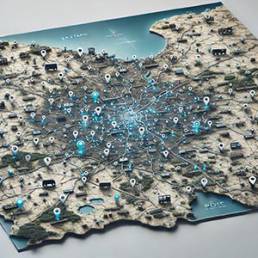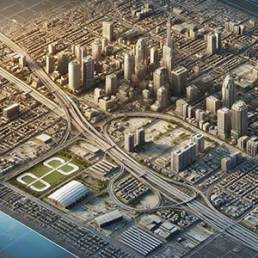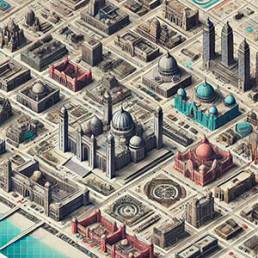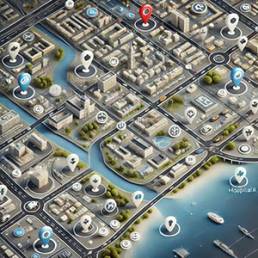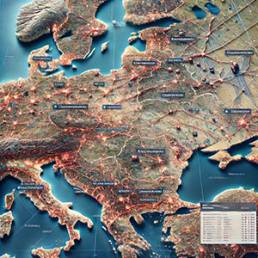Description
Flat, two-dimensional graphical representations or illustrations of significant physical features, buildings, monuments, or points of interest within a specific geographic location. These landmarks are commonly used in maps, diagrams, and various visual formats to provide a clear and easily recognizable depiction of key sites. Often designed in a simplified, symbolic, or artistic style, 2D Landmarks help users quickly identify important locations without the need for complex details or three-dimensional modeling.
These visual elements enhance cartographic design and improve map readability, making navigation easier for users of digital and printed maps. 2D Landmarks can represent historical monuments, government buildings, transportation hubs, cultural institutions, and natural landmarks such as mountains, lakes, and parks. Their use is widespread in tourism guides, transit maps, and urban planning documents, where a clean and uncluttered representation of geographic features is necessary.
In addition to aiding navigation, 2D Landmarks play a crucial role in educational materials, interactive applications, and geospatial analysis. City planners and GIS professionals use these representations to highlight urban infrastructure, assess spatial relationships, and communicate geographic data more effectively. Businesses and advertisers also leverage 2D Landmarks in location-based marketing to promote destinations and attract visitors to specific areas.
By integrating 2D Landmarks into digital mapping services, mobile applications, and printed navigation tools, users can benefit from an intuitive and visually engaging way to recognize significant locations. Whether used for orientation, historical reference, or aesthetic enhancement, 2D Landmarks serve as a practical and widely adopted solution for improving spatial understanding in geographic visualization.
Contact us for more information:


